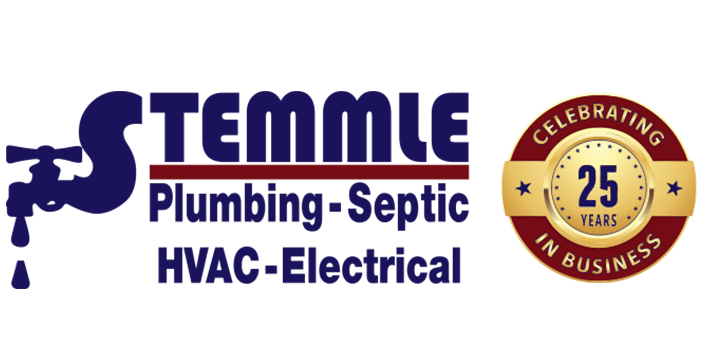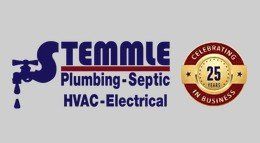BACKFLOW PREVENTION AND INSPECTION
Backflow prevention is used to protect water supplies from contamination or pollution due to backflow.
In water supply systems, water is normally maintained at a significant pressure to enable water to flow from the tap, shower etc. When pressure fails or is reduced as may happen if a water main bursts, pipes freeze or there is unexpectedly high demand on the water system, the pressure in the pipe may be reduced and may allow contaminated water from the ground, from storage or from other sources to be drawn into the system.
At Stemmle Plumbing, we are experts at backflow prevention and backflow preventer inspections.
Back pressure is another way that an undesirable contaminant may enter potable water piping. Sources of back pressure may be pumps in the water distribution system, boilers, heat exchanging equipment, or power washing equipment. In these cases there may be an almost constant risk of overcoming the static water pressure in the piping. To reduce the risk of contamination, a backflow preventer can be fitted. A backflow preventer is also important when chemicals are used, for instance for commercial/industrial descaling (boilers) or when bleaches are used for residential power washing.
To prevent contamination due to back pressure, some regulatory regimes require an air gap or mechanical backflow prevention assembly between the delivery point of mains water and local storage or use. Where submerged mains inflow is permitted a backflow prevention assembly is required, which protects the potable water system from contamination hazards. These hazards can be severe, some cases can be fatal. In many countries where regulations allow for the possibility of backflow, approved backflow prevention assemblies are required by law and must be installed in accordance with plumbing or building codes.
A typical backflow assembly has test cocks and shut-off valves and must be tested when installed, if relocated or repaired, and also each year.
In the Richmond, the EPA
holds local water suppliers responsible for maintaining a certain amount of purity in potable water systems. Often, a check valve is a common form of backflow prevention. In most cases, the law requires a double check (DC), n Reduced Pressure Principle Device(RP) device or an air gap when backflow prevention is mandated.
The simplest, and most effective way to provide backflow prevention is to provide an air gap. An air gap is simply a space between any device that opens to a plumbing system (like a valve or faucet) and any place where water can collect or pool.
Call Stemmle Plumbing for all your backflow prevention and backflow preventer inspection needs.
Doris H.
“Thank YOU Stemmle Plumbing for coming to the rescue yesterday. I had no idea what the problem was with the water backing up in the downstairs tub and overflowing in the toilet. I’ve never had to call on a repair service for plumbing in the 30 years I’ve been in my home. We found you in the phone book and you are forever the FIRST company I will call again should I need ANY repair work. From the moment I made the call, to watching you drive away after the job was done, you were so polite and it was like talking to a family member. Your staff was courteous, efficient and right on time. Your techs were super polite and we carried on a conversation like we had known one another for years smile emoticon and would not leave until everything was double-checked and ran properly. Again, thank you so much….from Ms. Harper, Manakin-Sabot, Va….”




